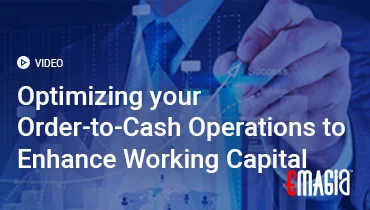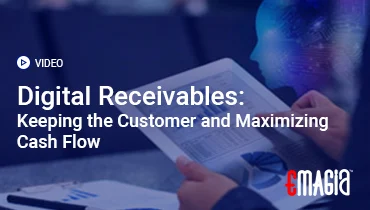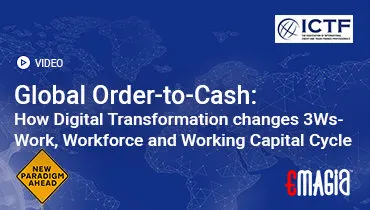In today’s fast-paced business environment, every company is looking for a competitive edge. Often, that edge isn’t found in a new product or a breakthrough service, but in the quiet, methodical processes that keep the entire operation running smoothly. One of the most overlooked areas for significant improvement is the accounts payable (AP) and accounts receivable (AR) cycle. Traditional paper-based invoicing is slow, expensive, and prone to errors. It’s a relic of a bygone era, and for many businesses, it’s a major drag on cash flow and profitability. But what if there was a better way? A way to cut costs, accelerate payments, and free up valuable time for more strategic work?
That’s where electronic invoicing comes in. It’s more than just a digital version of a paper bill; it’s a complete transformation of the billing and payment process. This guide will take a deep dive into the tangible and intangible benefits of adopting a modern e-invoicing system. We will explore how this technology can dramatically reduce operational costs, improve financial controls, and position your business for sustainable growth. Get ready to rethink how your company handles its finances and discover the powerful advantages of moving beyond paper.
Understanding the True Cost of Traditional Paper Invoicing
Before we can fully appreciate the cost savings from e-invoicing, we must first understand the hidden and obvious expenses associated with the old way of doing things. It’s not just the price of a stamp; it’s a complex web of costs that can accumulate to a substantial sum over time. Many businesses only see the surface-level expenses, failing to account for the labor, time, and errors that eat into their bottom line. We’ll break down these often-overlooked costs to paint a complete picture.
The Tangible and Obvious Expenditures
At the most basic level, traditional invoicing requires a stack of physical resources. There’s the cost of paper, envelopes, and toner for the printer. Then you have the postage and delivery fees, which can quickly add up, especially if you’re dealing with international clients or sending large volumes of invoices. These are the expenses that are easy to track, but they are only the tip of the iceberg.
The Hidden Labor and Time Costs
The real financial drain comes from the manual labor involved in every step of the process. An employee has to print the invoice, fold it, stuff it into an envelope, and apply a stamp. Then, they must physically take it to the mail, and the waiting begins. On the receiving end, another employee must open the envelope, scan the document, and manually key the data into a financial system. This repetitive, time-consuming data entry is a prime opportunity for human error, which leads to even more time spent on corrections and reconciliation.
Unnecessary Administrative Burdens and Inefficiencies
The cycle doesn’t end there. Following up on late payments becomes a chore of phone calls, emails, and resending invoices. Resolving disputes, matching invoices to purchase orders, and managing approval workflows all add layers of administrative burden. Each of these steps contributes to a higher cost per invoice, which can be staggering for businesses of all sizes.
The Power of E-Invoicing: A Shift from Cost to Value
Transitioning to an electronic system is not just about digitizing a document; it’s about re-engineering a core business process for maximum efficiency. This shift delivers significant cost savings and creates new opportunities for financial management. By automating the entire life cycle of an invoice, from creation to payment, companies can unlock value that was previously trapped in manual processes.
Immediate Reductions in Operational Expenses
One of the most immediate benefits is the elimination of paper-related costs. You no longer need to budget for paper, printers, envelopes, or postage. This is a direct and easily measurable saving. For large enterprises, this can amount to thousands, if not tens of thousands of dollars annually. For small businesses, it’s a significant reduction in day-to-day overhead.
Minimizing Labor Costs Through Automation
Automation is the key driver of long-term savings. By automating data capture and entry, you free up your finance team from repetitive tasks. They can now focus on more critical activities like financial analysis, fraud detection, and strategic planning. This re-allocation of resources boosts productivity and allows you to do more with the same headcount, or even reduce labor costs over time.
Maximizing Cash Flow and Financial Health
While reducing expenses is crucial, the real game-changer is the impact on your company’s cash flow. An e-invoicing system accelerates every stage of the payment process, leading to a healthier balance sheet and a more stable financial position. It’s a fundamental shift that empowers businesses to better manage their liquidity.
Accelerated Payment Cycles and Enhanced Liquidity
Faster processing means quicker payments. When an invoice is sent electronically, it arrives instantly. The approval and matching processes are automated, reducing the time it takes for an invoice to be paid. This can shorten your payment cycle by several days or even weeks, which has a ripple effect on your entire business. With improved liquidity, you have more working capital to invest in growth, pay off debt, or cover unexpected expenses.
Reduced Payment Errors and Dispute Resolution
Manual data entry is a major source of errors. A misplaced digit can lead to a significant payment delay or a dispute with a supplier. Digital systems, with their ability to automatically match invoices to purchase orders and receipts, drastically reduce these inaccuracies. When a dispute does arise, the entire audit trail is digitized and easily accessible, allowing for quick and transparent resolution.
The Broader Business Impact: Beyond the Bottom Line
The benefits of modern invoicing software extend far beyond simple financial metrics. They impact supplier relationships, security, compliance, and even your company’s environmental footprint. These are the long-term, strategic advantages that can differentiate your business from the competition.
Strengthening Vendor and Supplier Relationships
Paying your suppliers on time is a key to maintaining a good relationship. When your payment cycle is slow, it can create tension and mistrust. A streamlined, efficient invoicing system demonstrates professionalism and reliability. This can lead to better terms, potential discounts, and a more collaborative partnership.
Enhancing Data Security and Regulatory Compliance
Paper invoices are vulnerable. They can be lost, stolen, or compromised. An electronic system offers a secure, encrypted platform for exchanging sensitive financial information. It also provides a clear and complete audit trail, which is crucial for regulatory compliance. With modern systems, you can ensure that you are always meeting your legal obligations and protecting your business from fraud.
Driving Environmental Sustainability
By eliminating paper from your invoicing process, you are making a conscious choice to be more environmentally friendly. This commitment to sustainability is not only good for the planet but also a powerful message to your clients, partners, and employees. It shows that your business is forward-thinking and socially responsible.
A Step-by-Step Guide to Implementing an E-Invoicing System
Making the transition to an electronic system can seem daunting, but with the right approach, it can be a smooth and rewarding process. This section provides a practical roadmap to help you successfully implement a new e-invoicing solution.
Choosing the Right Platform for Your Needs
Not all platforms are created equal. The right choice for your business depends on a number of factors, including your industry, company size, and existing financial systems. We’ll cover the key features to look for, such as integration capabilities, user-friendliness, and advanced automation features like optical character recognition (OCR) and machine learning.
Preparing Your Team and Partners for the Change
Successful adoption requires buy-in from your entire team and collaboration with your partners. We’ll discuss the importance of communication, training, and change management. By addressing concerns and demonstrating the benefits, you can ensure a smooth transition and maximize the return on your investment.
Modernizing Financial Operations with Emagia
For businesses ready to move beyond traditional invoicing and embrace the future of finance, a robust and intelligent platform is essential. This is where Emagia steps in, offering a comprehensive solution that goes beyond simple automation. Emagia’s platform uses advanced AI and machine learning to not only streamline your invoicing process but to also provide predictive insights that can transform your entire financial operations.
The platform’s capabilities include AI-powered invoice capture, which drastically reduces manual data entry and errors. It offers intelligent workflow automation that ensures invoices are routed to the right people for approval instantly. Furthermore, Emagia provides a single, unified dashboard for managing all your accounts payable and receivable, giving you complete visibility and control over your cash flow. By leveraging Emagia, companies can not only realize the cost savings from a streamlined process but also gain the strategic advantage of a truly intelligent financial management system.
FAQs: Your Questions on Electronic Invoicing Answered
What is the typical ROI for e-invoicing?
The return on investment can vary, but many companies see a positive ROI within a year. The key savings come from reduced labor costs, faster payment cycles, and the elimination of paper-related expenses. For some organizations, the ROI can be as high as 80% or more on their initial investment.
How does e-invoicing affect regulatory compliance?
Electronic invoicing systems are designed with compliance in mind. They provide a clear, digital audit trail for every transaction, ensuring that your records are accurate and easily accessible. Many platforms also comply with global and regional e-invoicing regulations, such as those for VAT or GST, making it easier to operate across borders.
Is it difficult to get suppliers and customers to adopt e-invoicing?
While it can be a challenge, the benefits are clear to both parties. E-invoicing platforms make it easy for suppliers to send invoices and get paid faster. For customers, it means a more streamlined process and a clearer record of all transactions. Providing clear communication and training can significantly increase adoption rates and ensure a smooth transition for everyone involved.
Can e-invoicing software integrate with my existing financial systems?
Most modern e-invoicing platforms are built with integration in mind. They can connect seamlessly with a wide range of accounting software, ERP systems, and other financial tools. This ensures that data flows automatically between systems, eliminating the need for manual data transfer and maintaining data integrity across your entire financial landscape.



